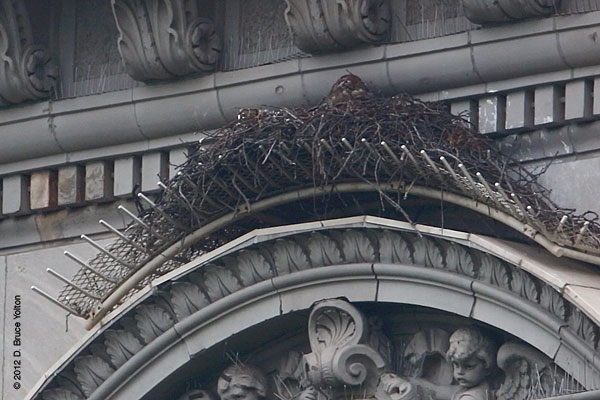Fantastic Fifth Avenue
While I only could see one eyass from street level, and not the three that have been seen from building terraces, I still had a fantastic visit to Fifth Avenue this evening.
Both parents were very active attending to their newborns. Pale Male hunted and removed leftovers. The mother fed the eyasses (watch the video) and snuggled up to with them at nightfall.

























































